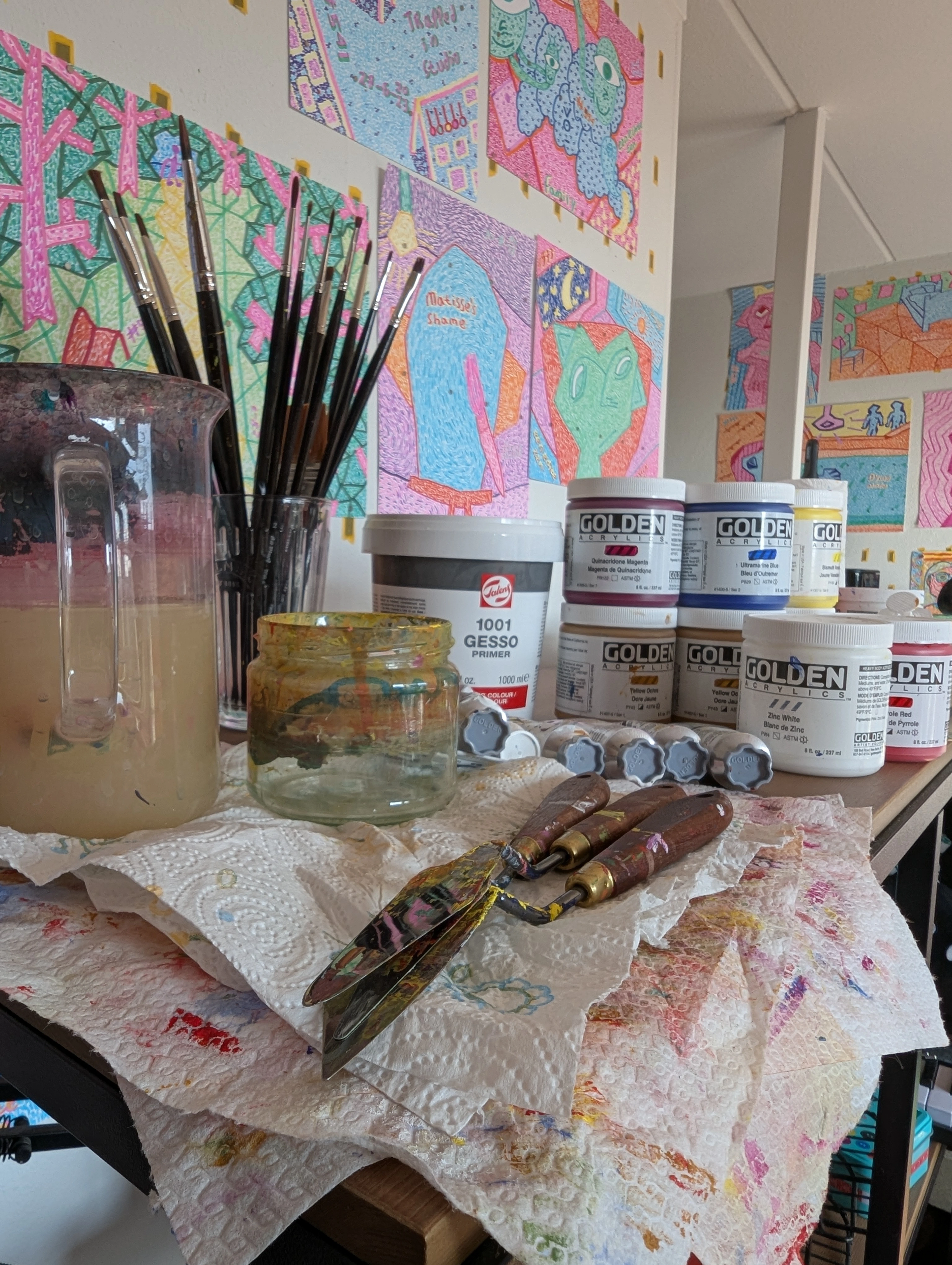
Unlocking Calm: My Go-To Art Therapy for Stress Relief & Mindfulness
Dive into my personal journey with art therapy. Discover accessible, non-judgmental exercises designed for stress relief and mindfulness, proving you don't need to be an artist to find peace through creativity.
Unlocking Calm: My Go-To Art Therapy for Stress Relief & Mindfulness
Life, am I right? It throws curveballs, deadlines, and sometimes, a whole lot of mental clutter. There are days when my brain feels like a browser with a hundred tabs open, all screaming for attention. In those moments, I often find myself instinctively reaching for my art supplies, not to create a masterpiece for my art for sale collection, but simply to breathe.
For me, art therapy isn't about being a "fine artist" or producing something worthy of a museum in 's-Hertogenbosch. It's about the pure, unadulterated process of making. It's about getting lost in color, texture, and movement. It's about giving my anxious thoughts a visual outlet, a silent conversation between my inner world and the canvas. And honestly, it often works wonders for melting away stress and grounding me in the present.
So, if your mind sometimes feels like a chaotic abstract painting by Zeng Fanzhi, you're in good company. I want to share some of my favorite, incredibly simple art therapy exercises that you can try at home. No experience needed, just a willingness to play.
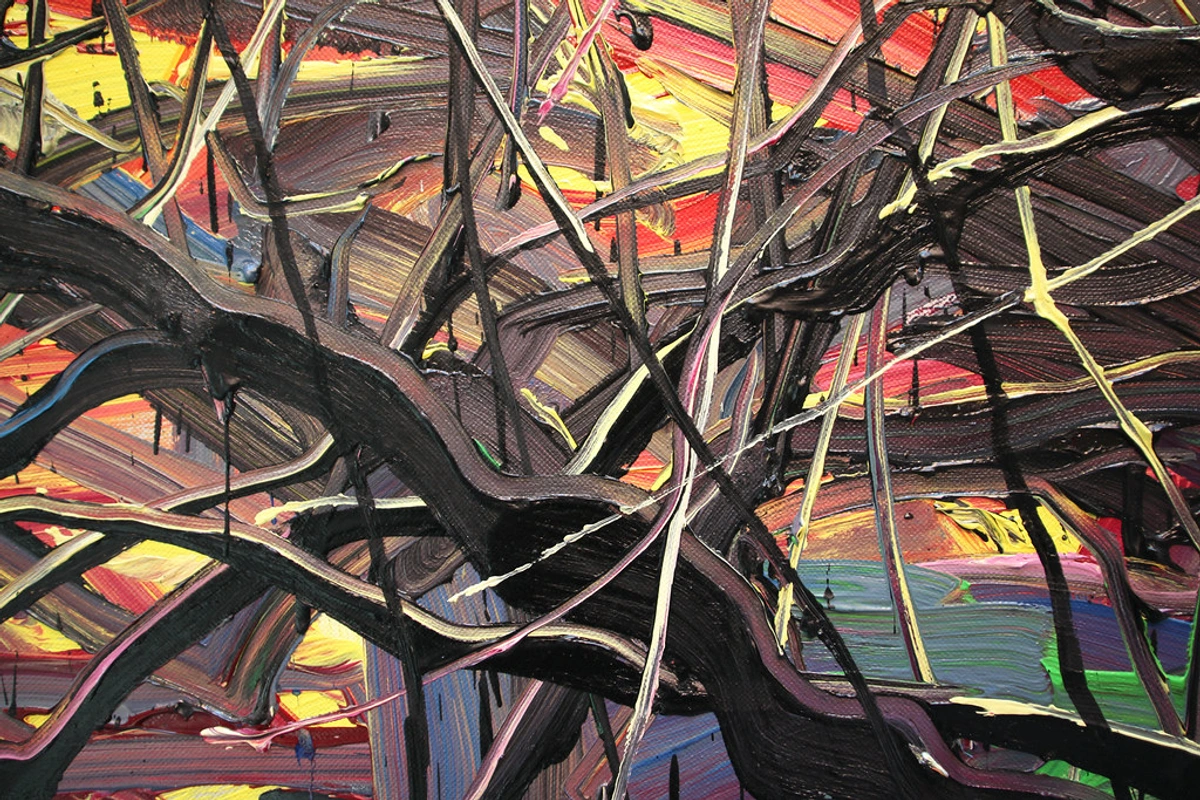
https://live.staticflickr.com/2875/8866942510_439379d853_b.jpg, https://creativecommons.org/licenses/by/2.0/
Why Art? My Personal Connection to Healing through Creativity
Before we dive into the "how-to," let's chat about the "why." Why does fiddling with paint or pencils help when my shoulders are up around my ears and my thoughts are racing?
For me, it's a few things:
- A Welcome Distraction: When I'm feeling overwhelmed, my brain latches onto problems. Art forces a shift in focus. It's hard to ruminate on that awkward email when I'm trying to blend two colors or create a specific texture. It's a mindful moment, a gateway to inner peace and reflection.
- Non-Verbal Release: Sometimes, words just aren't enough, or I don't even know what I'm feeling. Abstract art, in particular, allows me to express emotions without needing to label them. A jagged line might be anger, a soft swirl might be longing. It’s like a dialogue with art.
- The Power of Process: This is the big one. There's no right or wrong. No grade. No expectation. Just me, the materials, and the moment. It's a beautiful way to embrace the art of intuitive painting and truly be present.
It's a lot like the feeling I get when I'm just letting my creative flow take over, accidents and evolution included. It's a reminder that imperfection is often where the most interesting things happen, a lesson I've learned many times in my timeline as an artist.
My Favorite Art Therapy Exercises for Instant Calm
You don't need fancy supplies or a dedicated studio. A pen and paper, some cheap paints, or even just a few colored pencils will do. The most important tool is your willingness to let go.
1. Mindful Mark-Making: The "Chaos to Calm" Doodle
This is my go-to when my brain is truly buzzing. It's simple, cathartic, and incredibly effective for bringing me back to the present.
The Idea: Start by expressing your current mental state with chaotic marks, then slowly transition to more ordered, calming patterns.
What You'll Need:
- Paper (any kind)
- Pen, pencil, or markers (whatever feels good)
How I Do It:
- Start Chaotic: I pick up my pen and, without thinking, let my hand move. Jagged lines, tight scribbles, dark shading – whatever feels like the visual representation of my stress or anxiety. I don't lift the pen much, letting the lines build up. Sometimes it feels like that piece Yayoi Kusama made, a beautiful mess.
- Breathe and Observe: After a minute or two of this raw expression, I take a deep breath. I look at the chaos I've created. I don't judge it; I just acknowledge it.
- Find the Calm: Now, I consciously try to introduce elements of calm. Maybe I start filling in the chaotic spaces with repetitive, soothing patterns – small circles, parallel lines, gentle waves. Or I might pick a specific area and try to "smooth it out" with softer strokes, like blending colors in a Gerhard Richter abstract painting.
- Repeat and Refine: I continue this dance between chaos and calm until the entire page feels balanced, or until I feel a shift in my own internal state. The goal isn't a perfect drawing, but a journey from inner turmoil to a sense of peace.
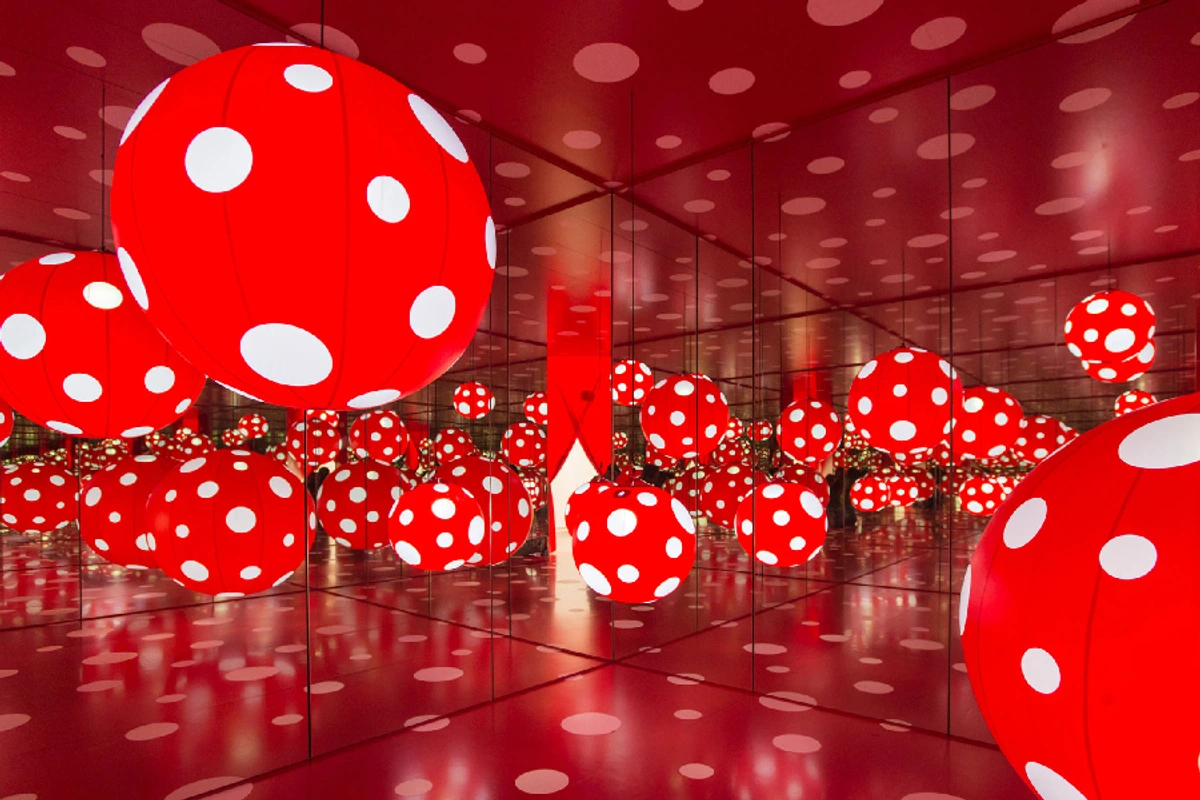
https://upload.wikimedia.org/wikipedia/commons/e/e6/Yayoi_Kusama%2C_Dots_Obsession%2C_2013-2016.jpg, https://creativecommons.org/licenses/by-sa/4.0
2. Emotional Landscape: Painting Your Inner Weather
Sometimes, I wake up and my mood feels like a storm cloud, or maybe a surprisingly sunny day despite external circumstances. This exercise is perfect for visually capturing those elusive feelings. It’s about the healing power of color and letting it speak for you.
The Idea: Use colors, shapes, and textures to create an abstract representation of your current emotional state or a specific feeling you want to process.
What You'll Need:
- Paper or small canvas
- Paints (watercolor, acrylic, even finger paints!) or colored pencils/pastels
- Brushes or even your fingers
How I Do It:
- Check In: I close my eyes for a moment and really feel what's going on inside. Is it tension? Joy? A dull ache? A burst of energy? I don't intellectualize it; I just observe.
- Choose Your Palette: Based on that feeling, I intuitively pick colors. If I'm feeling anxious, perhaps I reach for vibrant reds and sharp blues. If I'm calm, maybe soft greens and soothing purples. There's no 'correct' color for an emotion; it's whatever resonates with me in that moment.
- Express Freely: I start applying the colors to the paper. Sometimes I use bold strokes, other times gentle washes. I might layer colors, blend them, or let them clash. I'm not trying to draw a tree or a house; I'm creating an abstract landscape of my emotions. Like Christopher Wool's dots, but with my own emotional rhythm.
- Reflect (Optional): Once I feel the piece is "done" (which often just means I've expressed what needed to be expressed), I step back. I observe the colors, the forms, the overall impression. Sometimes, a title or a single word comes to mind, helping me decode the abstract art I've made.
![]()
https://www.rawpixel.com/image/5924320/photo-image-background-public-domain-art, https://creativecommons.org/publicdomain/zero/1.0/
3. Collage of Contradictions: Visualizing Inner Conflict
This one is fantastic for when I feel pulled in different directions or have conflicting thoughts. It's a bit more hands-on and requires some gathering, but the tactile process itself can be very grounding.
The Idea: Create a collage that visually represents an internal struggle, a choice, or opposing feelings.
What You'll Need:
- Magazines, old newspapers, printed images (or just colored paper)
- Scissors
- Glue stick
- A base piece of paper or cardboard
How I Do It:
- Gather & Cut: I spend some time flipping through magazines, cutting out words, images, and colors that resonate with the different sides of my current internal situation. A serene landscape for peace, a chaotic image for stress, a striking face for decision-making. No judgment on what I cut out.
- Arrange & Explore: Before gluing, I arrange the cut-outs on my base paper. I play with placement, overlap, and juxtaposition. How do these conflicting elements interact? Can they find a balance? What happens when I put "joy" next to "fear"? It’s like creating a narrative without words. Sometimes I find myself looking for patterns like in Henri Matisse's 'The Red Room', but my own chaotic version.
- Glue & Commit: Once I have an arrangement that feels right, I start gluing. This act of "committing" can be surprisingly powerful, symbolizing a decision or an acceptance of the paradox.
- Reflect: I look at the finished collage. What does it tell me? Does it clarify my feelings? Does it show me a path forward, or simply acknowledge the complexity?
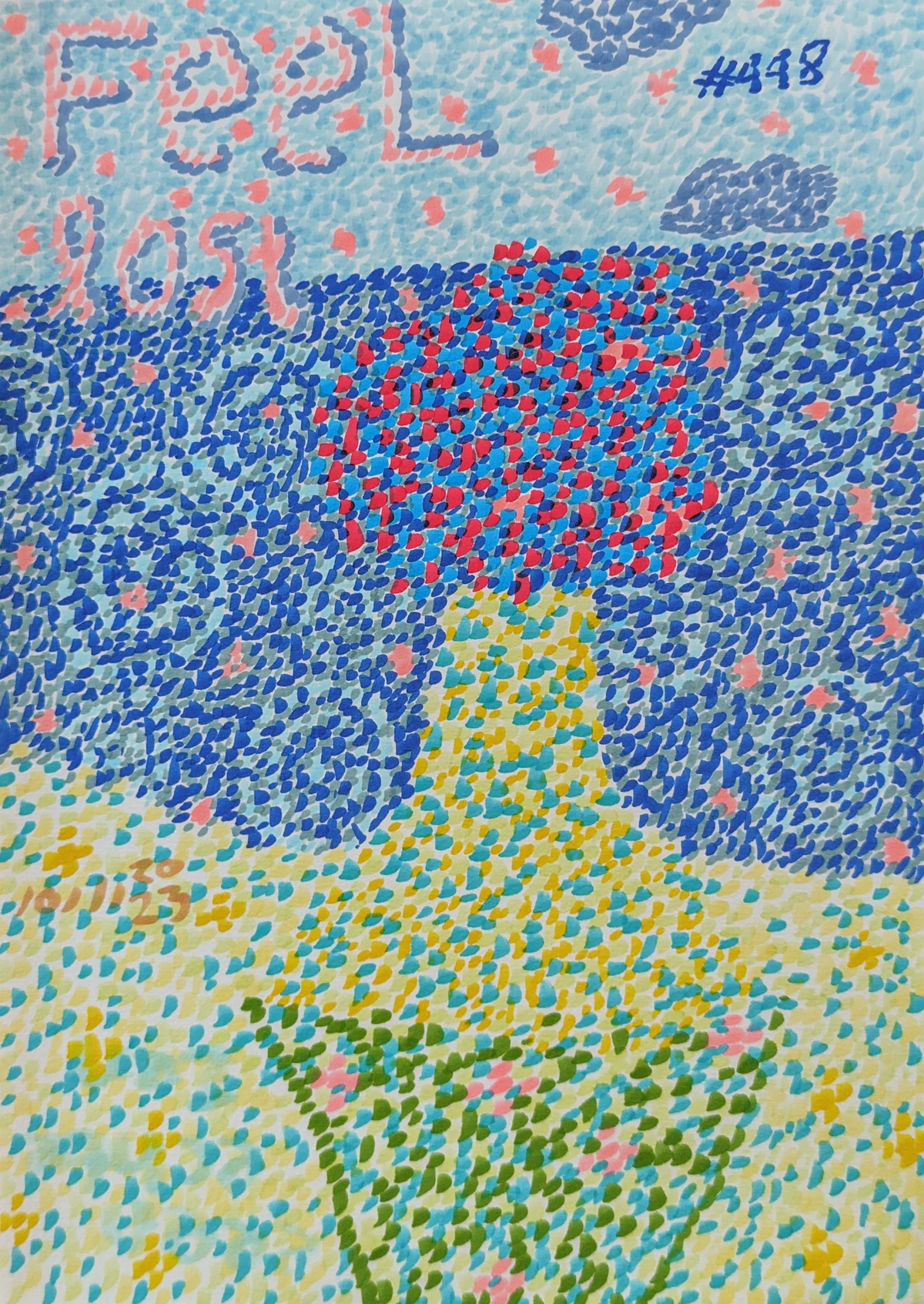
Zen Dageraad, https://zenmuseum.com/
Setting Up Your "Sacred" Art Space (Even if it's a Small Corner)
You don't need a sprawling creative sanctuary to practice art therapy. I certainly didn't start with one. But having a designated spot, even if it's just a cleared space on your kitchen table, can make a huge difference.
- Make it Accessible: Keep your chosen supplies handy. If you have to dig through a cupboard, you're less likely to start when the mood strikes.
- Clear the Clutter: A tidy space helps create a tidy mind (or at least, one less distracted).
- Set the Mood: Maybe light a candle, put on some calming music, or just ensure you won't be interrupted. This is your time.
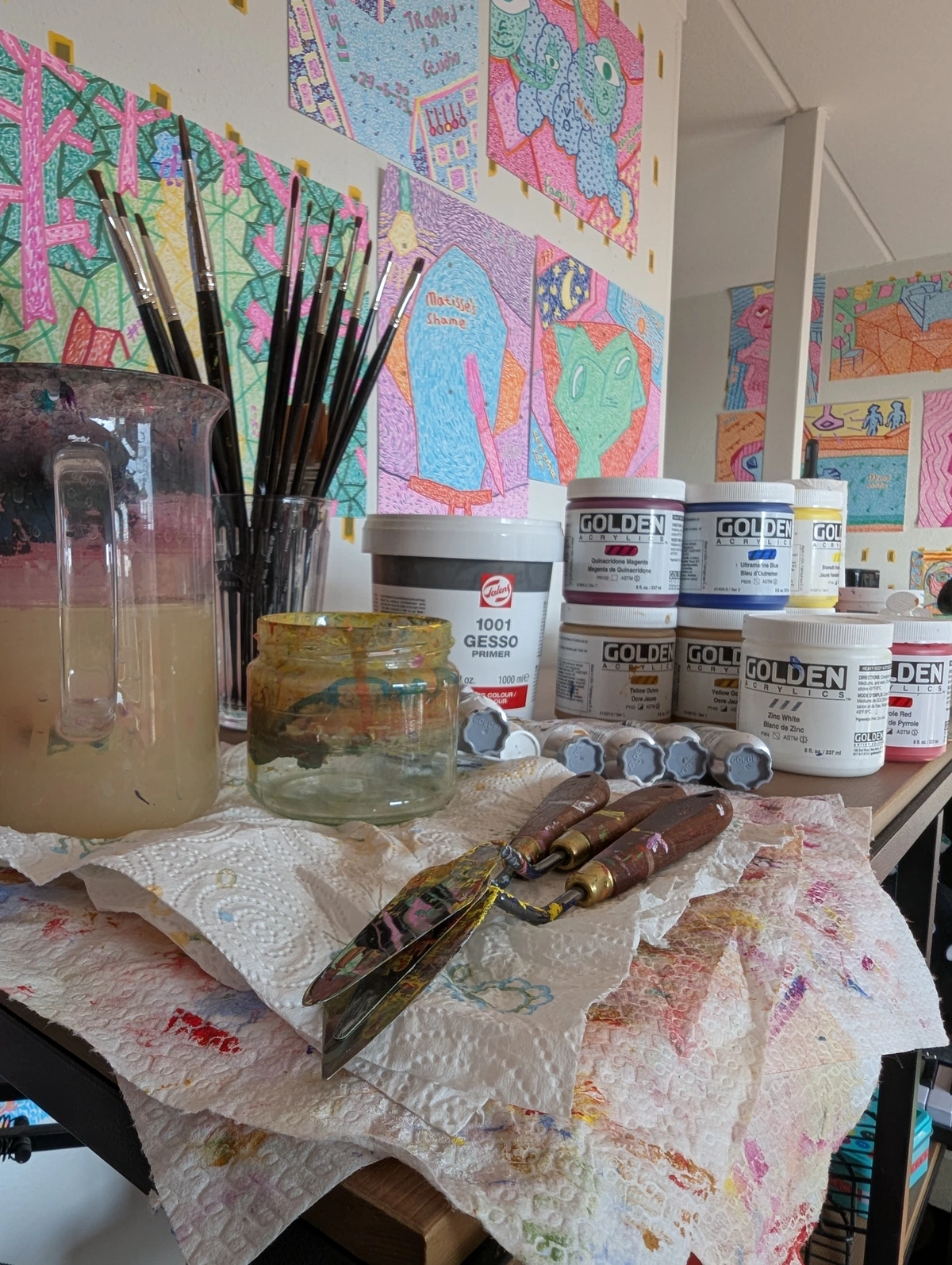
Zenmuseum, https://images.zenmuseum.com/page/art-inspirations/evaluate-what-you-love.jpg
Important Tips for Your Art Therapy Journey
Remember, this isn't about perfection. It's about presence.
- No Judgment, Please: This is perhaps the most crucial rule. Silence that inner critic! There's no "bad" art here, only honest expression. Embrace the power of imperfection.
- Focus on the Process: The joy and benefit are in the act of creating, not the final product.
- Listen to Yourself: If an exercise doesn't feel right, try another. Or invent your own!
- Keep it Private (if you want): You don't have to show anyone your art. It's for you.
- Explore Other Art Therapy Exercises You Can Try At Home: This article is just a small peek into the vast world of creative healing.
Frequently Asked Questions (FAQ)
Here are a few common questions I get about this kind of mindful art practice:
Question | Answer |
|---|---|
| Do I need to be artistic? | Absolutely not! The less you think about "art," the better. This is about expression and process, not skill. If you can hold a crayon, you can do this. |
| What materials should I start with? | Begin with whatever you have: paper, pencils, pens, crayons. If you want to expand, a cheap set of watercolors or acrylics can be very versatile. Don't overthink it. |
| How often should I do these exercises? | As often as you feel the need! Some days you might need a daily burst, other weeks you might not touch your supplies. Listen to your body and mind. |
| What if I don't feel better immediately? | Art therapy is a journey, not a magic pill. Sometimes, simply acknowledging your feelings through art is the first step. Be patient and kind to yourself. Consistent practice can lead to deeper insights and lasting calm. |
| Can I use abstract art for meditation? | Absolutely! I often find myself engaging in a dialogue with art when I need to clear my mind. It's a wonderful way to practice mindful observation. |
Final Brushstrokes of Thought
Embracing art therapy exercises for stress relief and mindfulness has been a truly personal and transformative journey for me. It’s a quiet rebellion against the constant demands of the modern world, a gentle reminder that my inner landscape deserves attention and care.
So, next time you feel that familiar knot of tension or the relentless chatter of your mind, I encourage you to grab some simple supplies and just make. Don't worry about the outcome. Just enjoy the process, embrace the quiet, and let your hands lead the way to a little more calm.
And if you ever find yourself drawn to the finished expressions of abstract art, perhaps you'll find something that resonates with your own journey among my available pieces. After all, isn't that what art is all about? Connecting, feeling, and finding a little piece of ourselves in the beauty around us.




